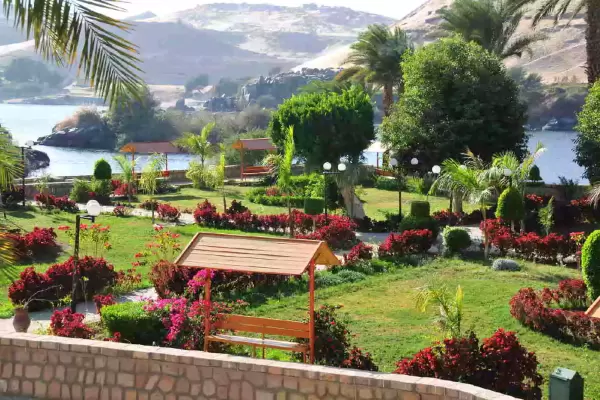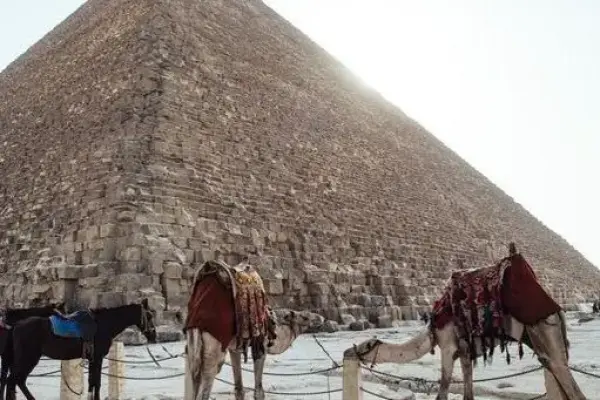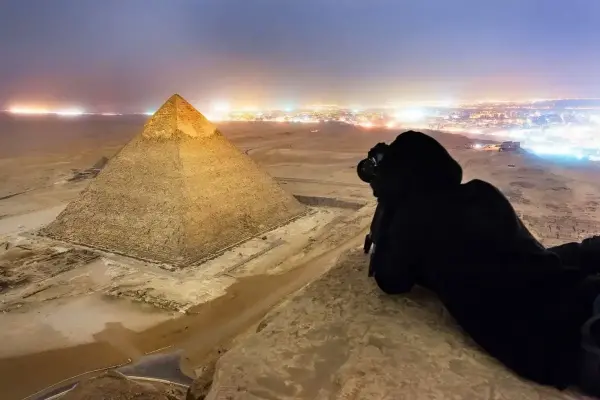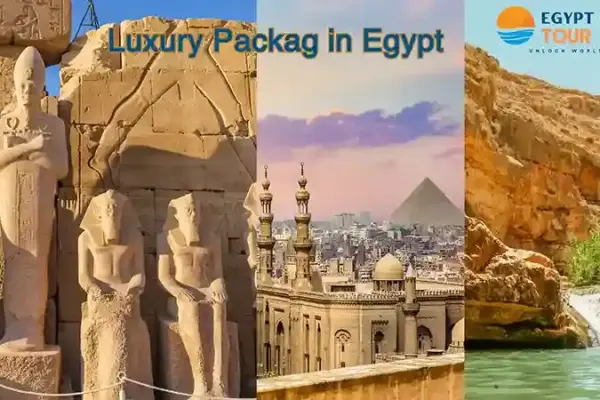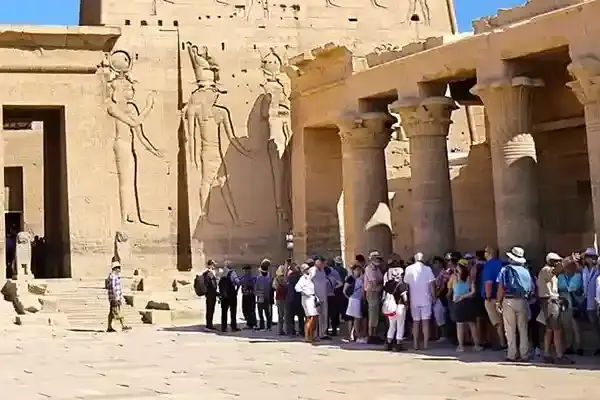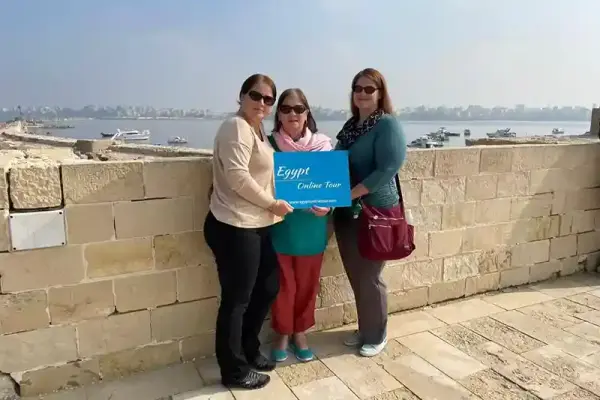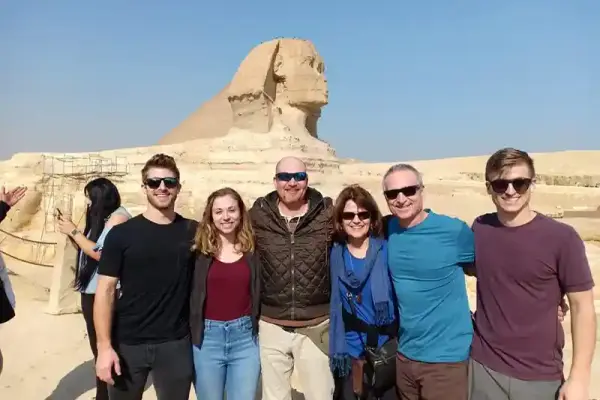Table of contents [Show]
Mosques in Cairo
Muhammad Ali Pasha's Mosque:

My travels typically take me to new areas I've never seen, but this time, I've collected fascinating information about Islamic culture and history for one of the most well-known mosques in the entire globe.
Let me start my fantastic Egypt tours and explain to you the facts I learned throughout my trips in Egypt. The Mosque of Muhammad Ali Pasha has given me a terrific journey that I did not enjoy previously.
Experience during Egypt day tours the description of Muhmmad Ali Pasha Mosque, It is quite uncommon for a building to succeed in combining grandeur and beauty in such a way, yet for the Muhammad Ali Mosque, it was a calm and simple work.
Due to its magnificent architecture and breathtaking vistas that you will discover during Egypt travel packages , the mosque, which was finished in 1848 on Muhammad Ali's personal command, was regarded as one of the most impressive structures on the Salah Al-Din citadel in Cairo.
Muhammad Ali built the mosque with two minarets to challenge the Ottoman Empire since it was illegal for anyone other than the sultan to erect a mosque with more than two minarets. The mosque is now a historic site included in our Egypt luxury tours and was built as a basic place of worship. Muhammad Ali is laid to rest in a Carrara marble mausoleum in the mosque's courtyard, to the right of one of the three entrances and concealed by a bronze grate.
Because of the mosque's significant use of marble on external walls and other surfaces, it is known as "The Alabaster Mosque." The mosque's interior, which had attractive finishes embellished with red, green, and gold, was influenced by some French Rococo elements and was built in the Ottoman architectural style.
It rises in four arches, and is surrounded by four lesser domes that are ornamented with religious emblems. 53 m wide and 54 m long in the courtyard It is a complex clock that King Louis Philippe of France gave to Muhammad Ali in 1845 in exchange for the obelisk that is currently located in Concorde Square in Paris and a Turkish obelisk. It is surrounded by a single arched Riwaq and has shipyards ascending pillars and enclosed in little domes. All this historical info will be relevant during our Egypt classic tours .
Citadel of Salah Eldin:
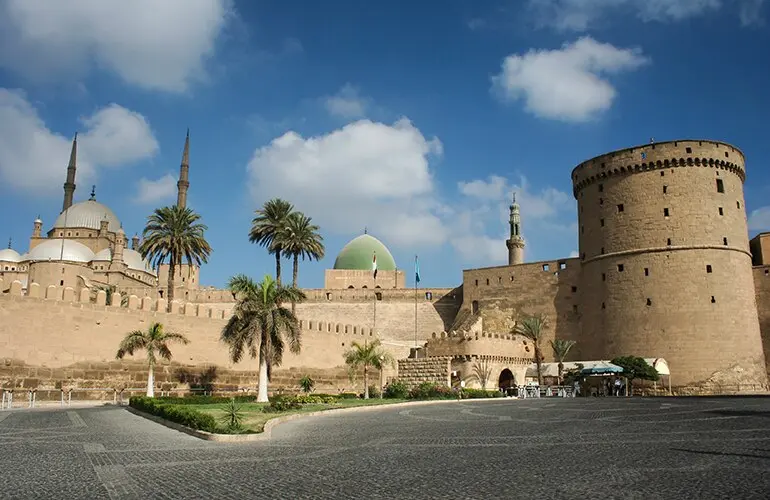
About 24 kilometers east of Latakia and 7 kilometers from the town of Al-Haffah, in Syria, is the Saladin Citadel, formerly known as Saone. It was included to the list of the Humanity's World Cultural and Natural Heritage together with the Krak de Cavalieri. Can you imagine the great history that you will discover during your Egypt spiritual tours in these great places?
The fortress was constructed in antiquity, most likely during the Phoenician era (beginning of the 1st millennium BC). Around 334 BC, the Phoenicians are reported to have surrendered to Alexander the Great. Between this period and the Byzantines' return in the tenth century, nothing is known about what happened to him. At the start of the 12th century, it was later captured by the Crusaders. I advise you to check our Cairo day tours , you will find many amazing places to visit such as The Giza Pyramids , the Egyptian Museum and more.
Al Azhar Mosque

The Fatimid caliph Al-Mu'izz ordered the construction of the Al-Azhar mosque in Cairo's new city. From 988 to 989, it was transformed into a madrasa and given Shiite teachings by Caliph Al-'Azîz, enabling the training of missionaries. It has been significantly taken over, expanded, outfitted, and renovated throughout Cairo's history. Join our Egypt budget tours to discover the history of great places, it is a worthwhile visit during Egypt adventure tours . It has played a significant role. Arab in design, it initially had a rectangular hypostyle prayer hall with five naves aligned to the qibla and a broader perpendicular middle bay, enlarging the mihrâb. This diagram resembled that of Ibn Tulun and, further away, the Great Mosque of Damascus (Syria, 705–715), which only has three naves that run parallel to the qibla.
Similar to Kairouan, the center lane was bordered by pairs of columns. In the past, the courtyard was enclosed by a portico with columns on just two sides, similar to mosques in the Muslim West like those in Cordoba and Kairouan, according to Creswell.
Three domes would have been present, two at the corners of the prayer hall's qiblî wall and one in front of the mihrâb. Caliph Al-Hâfiz (1131–1149) erected a new portico with columns around the courtyard and a dome at the entrance to the transept; the other side of the entry and the entrance to the central nave were then marked by groups of three columns. The mosque still sports a lavish Fatimid plaster ornamentation with naturalistic (palm trees) and stylised plant motifs mixing with geometric patterns like rosettes and Kufic lettering that you will discover during Egypt trips . The majority of the stucco designs are modeled after those found in the mosques of Samarra (Iraq, second half of the ninth century) and Ibn Tulun, although some ornaments are reminiscent of Byzantine pieces, particularly the pendants from Hagia Sophia. What do you think about taking a layover tour of Cairo after finishing your journey?
Amr Ibn Al-Aas Mosque

The Amr bin As Mosque was built by Amr bin As in 642/643, as indicated by the Gregorian calendar, in Fustat, a recently established city in Cairo's southern region. The Amr bin As Mosque is both Egypt's and Africa's first mosque to be built. The mosque was constructed on the site of Amr bin Aas camp.
Popular Categories
Related properties
Cairo, Aswan, and Luxor
-
Precio
$ 2,850
-
Tipo
Package
Cairo, Aswan, and Luxor
-
Precio
$ 1,850
-
Tipo
Package

